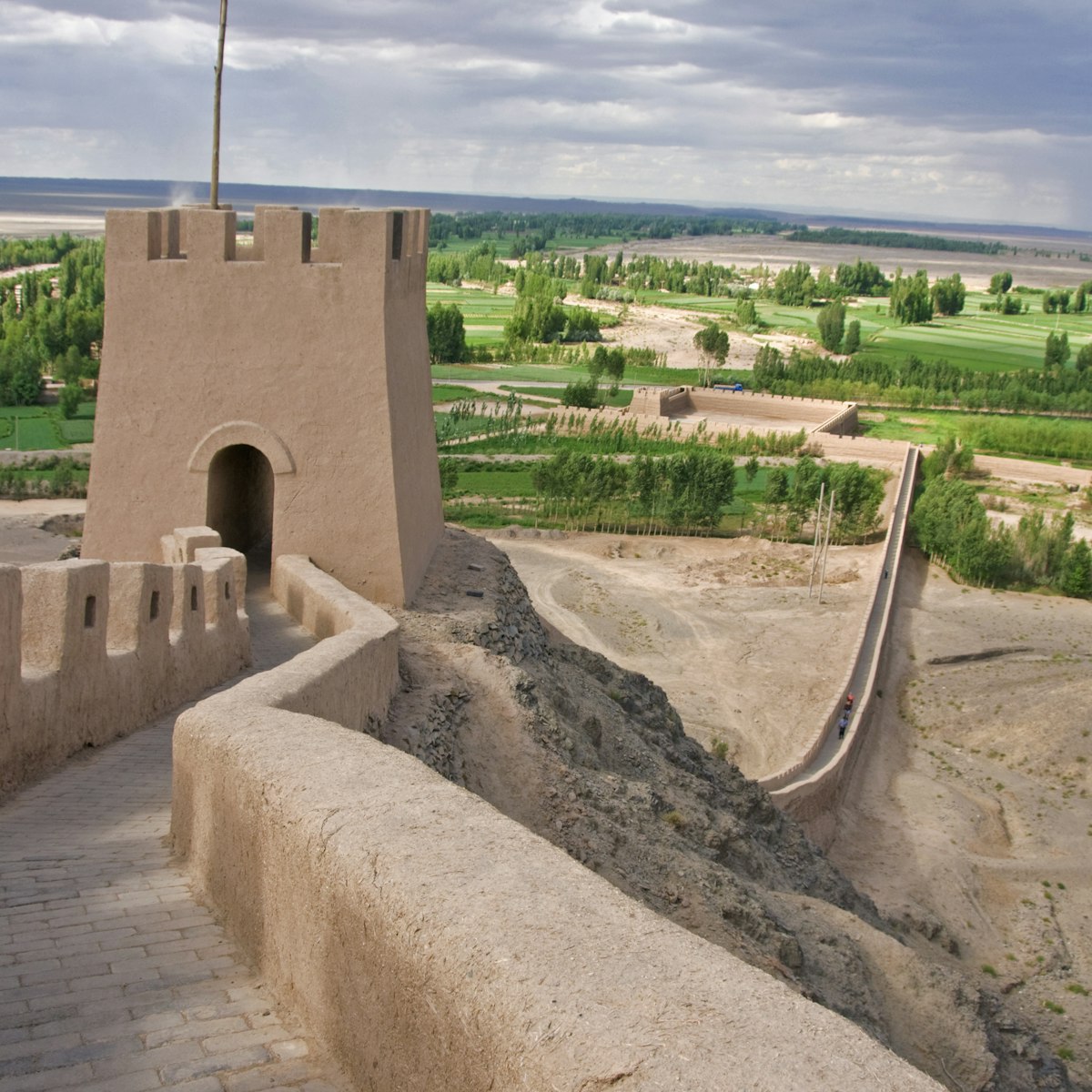Atop a 56m-high cliff overlooking the Taolai River south of Jiayuguan, a large, crumbling and wind-eroded chunk of packed earth is all that remains of this beacon platform, believed to be the first signalling tower along the western front of the Great Wall. Views over the river and bare gorge below are impressive and you can walk alongside lengthy attached vestiges of adobe Ming-era Great Wall. An excellent museum affords an exhaustive look at the Great Wall and its history here.
This beacon tower dates to the Ming dynasty and was erected in 1539. A sightseeing trolley (¥12) shuttles visitors the shortish (but baking in hot sun) distance from the ticket office to the subterranean viewing platform, labelled the ‘Underground Valley’. Inside, a very informative exhibition (with full English captions) on the beacon platform, the fort and the history of the Wall in this area provides context, while a large diorama adds further dimension. Other sections of the exhibition also cover the rest of the Great Wall across other parts of China, including Beijing. Views of the beacon platform can be had from a see-through cantilever bridge at the back of the exhibit hall, or you can walk the short distance to inspect its wind-scoured remains up close. Admission is included in the general ticket to Jiayuguan Fort.


